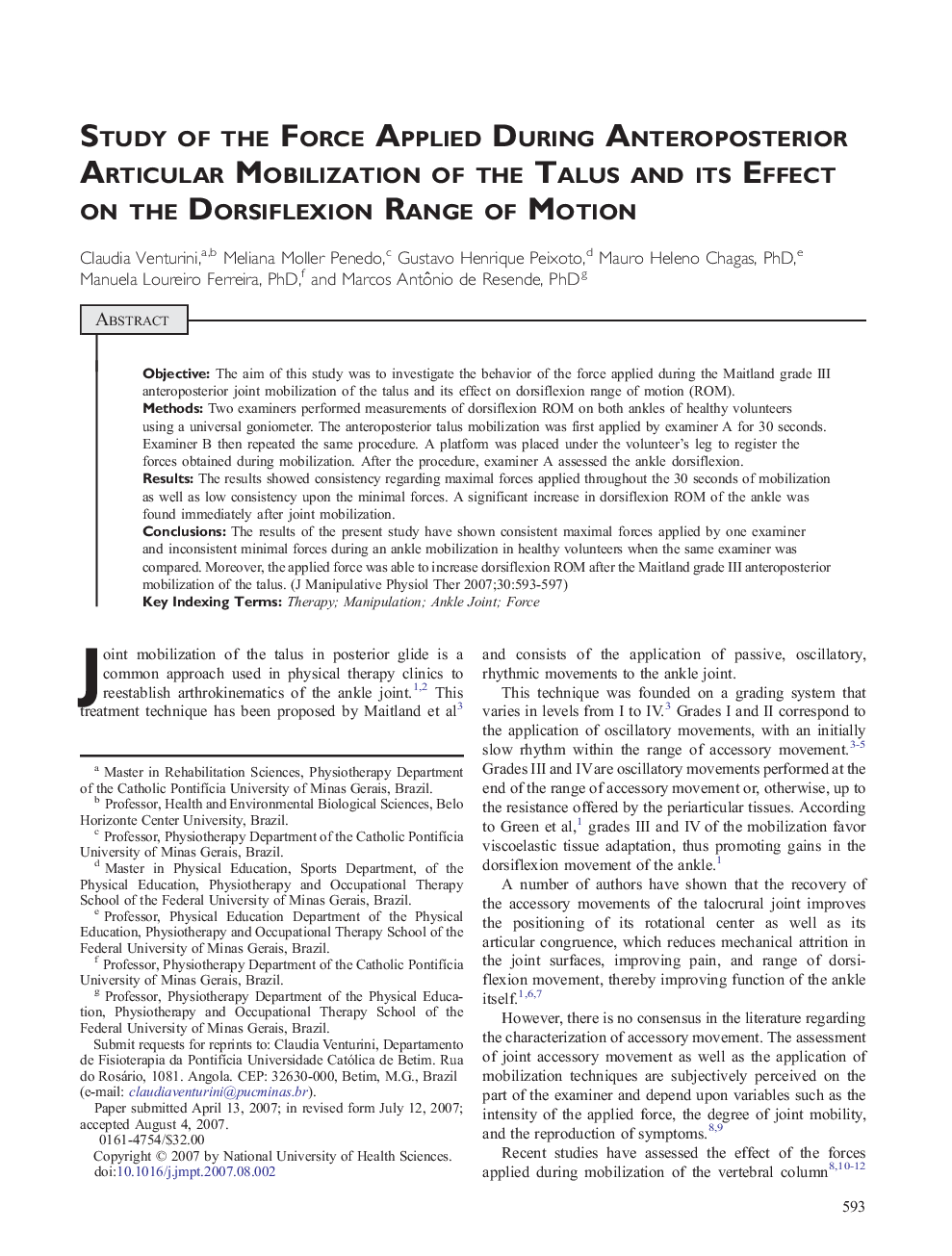| Article ID | Journal | Published Year | Pages | File Type |
|---|---|---|---|---|
| 2621355 | Journal of Manipulative and Physiological Therapeutics | 2007 | 5 Pages |
ObjectiveThe aim of this study was to investigate the behavior of the force applied during the Maitland grade III anteroposterior joint mobilization of the talus and its effect on dorsiflexion range of motion (ROM).MethodsTwo examiners performed measurements of dorsiflexion ROM on both ankles of healthy volunteers using a universal goniometer. The anteroposterior talus mobilization was first applied by examiner A for 30 seconds. Examiner B then repeated the same procedure. A platform was placed under the volunteer's leg to register the forces obtained during mobilization. After the procedure, examiner A assessed the ankle dorsiflexion.ResultsThe results showed consistency regarding maximal forces applied throughout the 30 seconds of mobilization as well as low consistency upon the minimal forces. A significant increase in dorsiflexion ROM of the ankle was found immediately after joint mobilization.ConclusionsThe results of the present study have shown consistent maximal forces applied by one examiner and inconsistent minimal forces during an ankle mobilization in healthy volunteers when the same examiner was compared. Moreover, the applied force was able to increase dorsiflexion ROM after the Maitland grade III anteroposterior mobilization of the talus.
